6 Most Effective Trout Fishing Rigs That Top Guides Use
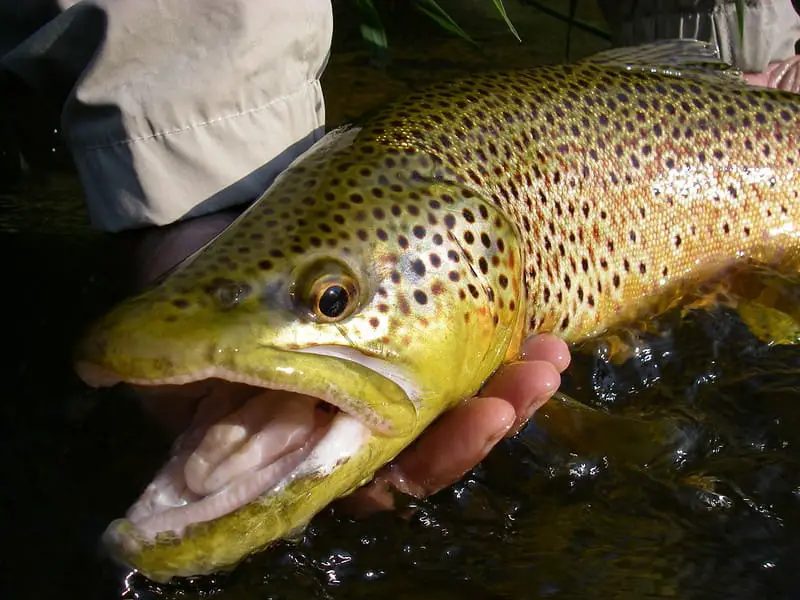
I’m going to share six of the most effective trout fishing rigs that top trout guides and I use to ensure our clients catch the most trout possible when fishing with bait.
I’ve included my most effective rigs for trout fishing in still-water lakes, ponds, and reservoirs, my best trout rigs for rivers.
As an experienced guide of over 20 years, I’ve had ample opportunities to use and test out many different rigs for trout fishing that I’ve learned from fellow guides and experienced trout anglers. The rigs here are the best of the best.
I’ll also shed light on common trout fishing rig mistakes that prevent anglers from catching trout, which are mistakes they don’t even realize they are making. If you’re making these same easy-to-fix mistakes, then the chances are, you’re missing out on catching trout.
The Trout Fishing Rig
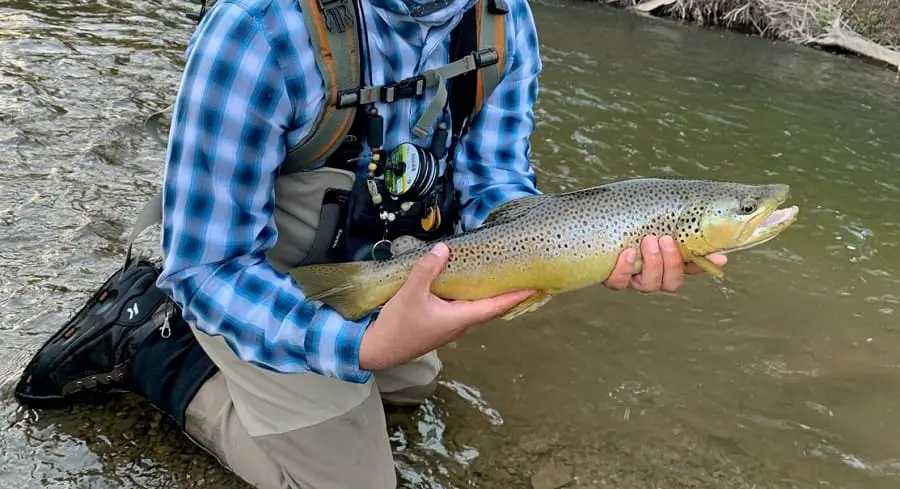
There are two vital components in trout fishing setups: the hook and the leader. These elements are essential because they are what the trout sees when it approaches a bait. If you have these two things wrong in your set-up, you will struggle to catch fish.
But don’t worry, I’m going the tell you exactly what I use for a hook and for a leader, as well as show you my entire trout fishing rig.
The Best Right Hook and Right Size For A Trout Fishing Rig
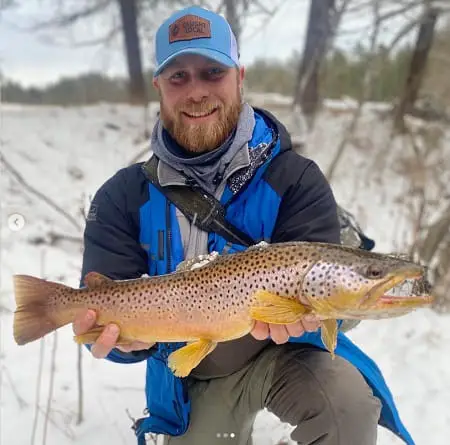
A quality hook should easily pierce the fish’s mouth on the hookset and it needs to stay secure during the fight. Unfortunately, not all hooks do this well.
In fact, some hooks that are really popular with new anglers are actually really bad and are preventing them from catching trout.
Unfortunately, anglers can’t be faulted for using bad hooks since many misleading articles written by ill-informed authors keep advocating for bait-holder hooks. These hooks are also sold by store staff at some of the large big box stores, and they are recommended by other anglers who just don’t know any better.
Good fishing guides and good anglers never use bait-holder hooks because they’re crap!
Fishing guides are particularly selective about the hooks they use. In order for them to give their clients the best chance of hooking and landing the most trout possible, they must use hooks that can effectively penetrate the fish’s mouth on the hookset and keep the fish securely hooked during the battle. They also must use hooks that aren’t excessively large or small.
If bait holder hooks were truly the best for bait, all guides and seasoned anglers would use them, but they don’t!
The Right Size Hook
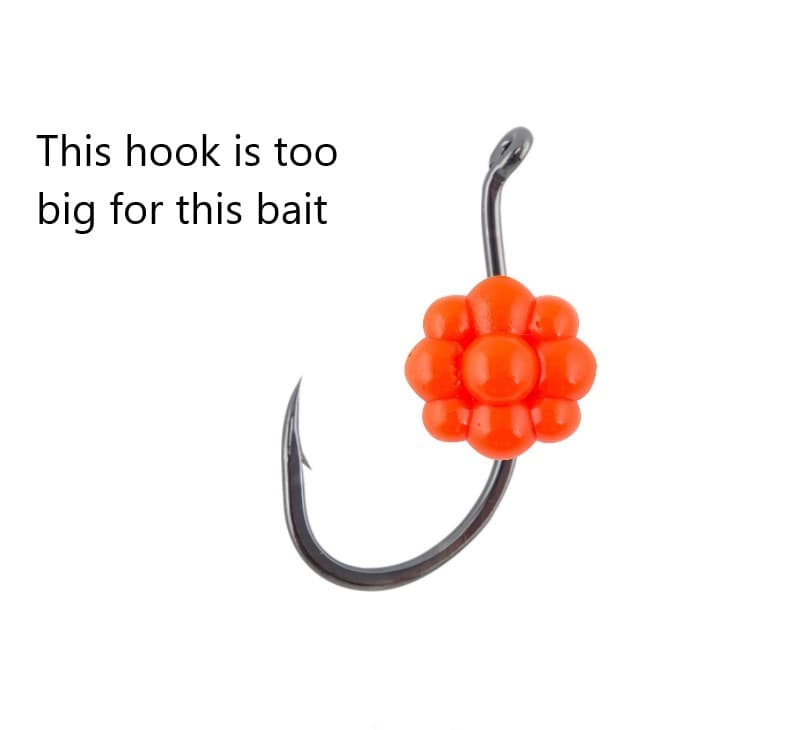
Trout have an excellent vision, and if they can see the hook or leader, especially in slow current or still water where they have plenty of time to inspect the bait.
Good anglers and guides use reliable short-shank wide gap hooks like the Raven Specimen or a Gamaktsu Octopus hook.
If they see the hook, they might decide not to bite. This is more so with wild trout and larger wiser trout.
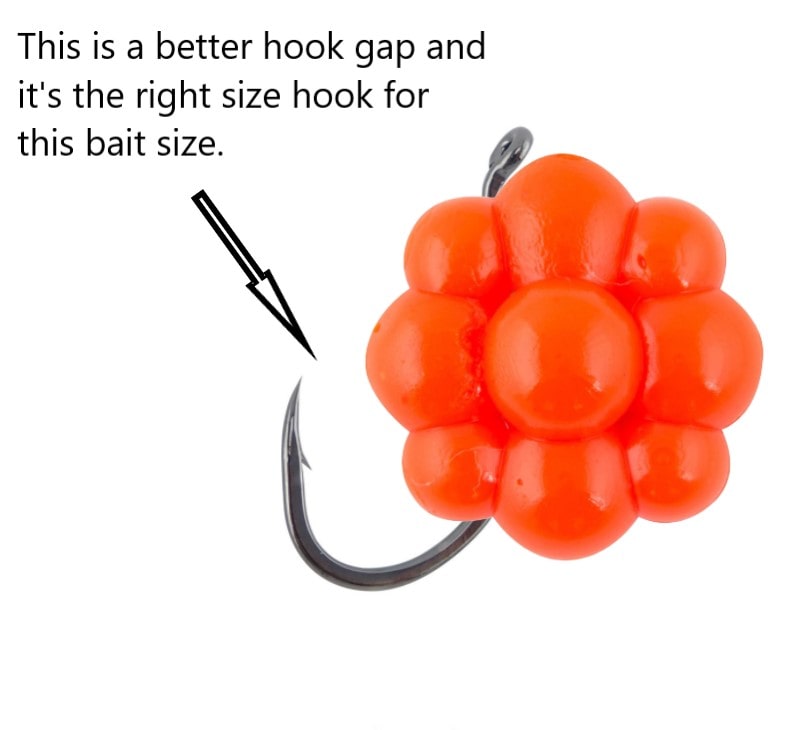
The size of the hook should be in line with the bait size.
An overly large hook is easy to spot, while a small hook may escape the trout’s vision but it won’t penetrate and hold onto the fish adequately.
Proper Bait Placement On The Hook
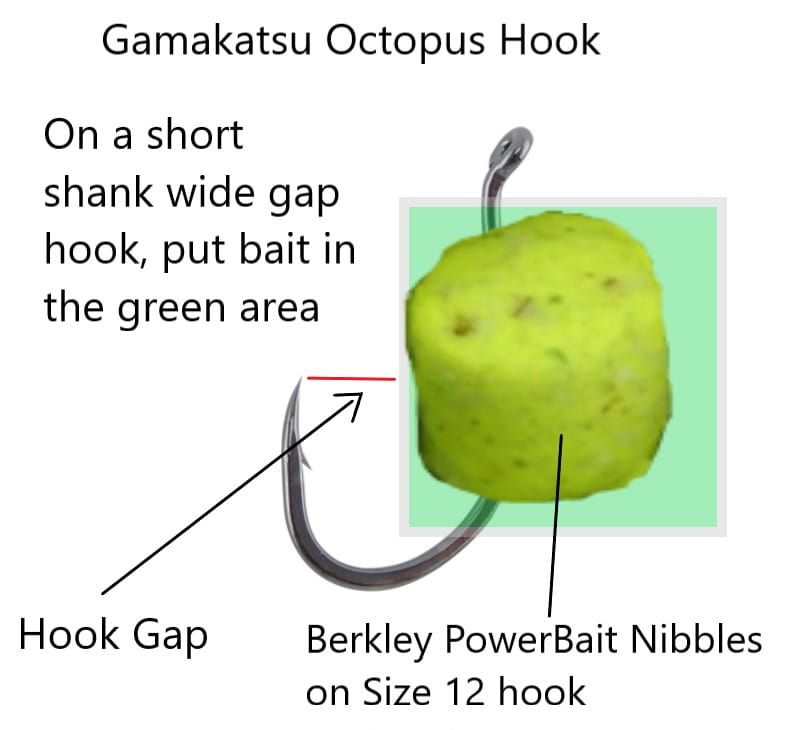
Having the right hook is essential, but if it’s rigged incorrectly it won’t be as effective.
Regrettably, many trout fishing setups promoted online are rigged incorrectly, which reduces the chances of catching fish.
From years of experience and plenty of trial and error, I can tell you this: never cover the hook point or fill the hook gap. If I keep the hook gap open and the hook point exposed, the fish can often hook themselves, especially in currents.
Choosing the Appropriate Leader Size
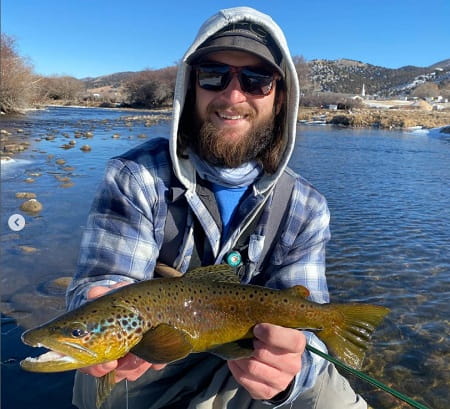
The leader’s pound test is what I’m referring to, not the length. Basic lengths for each setup can be seen in the diagrams below. I use different leaders for various sizes of trout and river conditions.
I’ve tested line diameter many times under various conditions and it really does make a difference. My general rule is to use a leader line so thin that the trout won’t detect it, yet only strong enough that the trout won’t keep breaking off.
Unfortunately, not all brands accurately rate their leaders, which can impede fishing success. One brand’s 6-pound leader can be as thick as a 12-pound test (this is a fact), which is not good for trout fishing since they will see this.
For this reason, I always purchase my leader line based on the line diameter provided on the box, not the pound test rating the company advertises.
Here are some basic guidelines for leader sizing. You can use these for the trout fishing rig setups outlined below.
- Trout Leader: 2 to 6 pounds: 0.004 inches to 0.007-inch diameter
- Steelhead and Bass or large trout: 8 to 12 pounds, the ideal is 8 pounds: 0.008 in diameter
A Brief Overview of My Trout Rigs
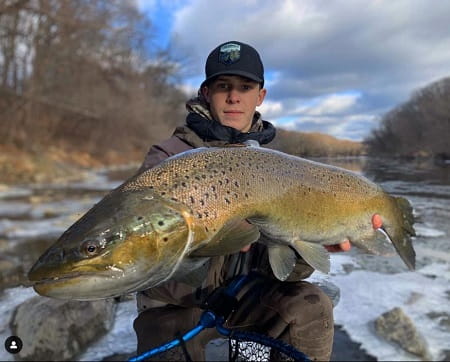
Let me clarify, I and other top anglers use these setups for any bait because the bait is often irrelevant.
Therefore, they can be used with spawn bags, worms, minnows, leeches, beads, flies, or any other bait.
These setups are proven effective and are regularly used by myself, other guides, and countless veteran anglers.
Feel free to modify these rigs to suit your needs and the fishing conditions you encounter. This is how I rig them when I’m guiding clients or fishing for leisure.
Float Fishing Trout Rig
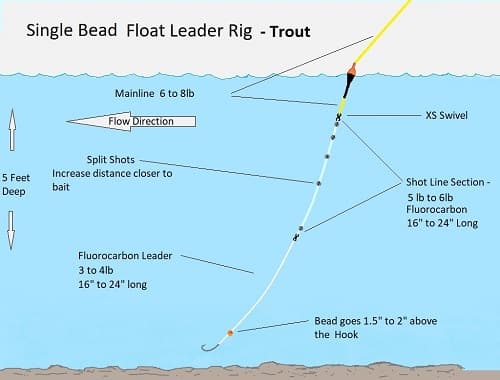
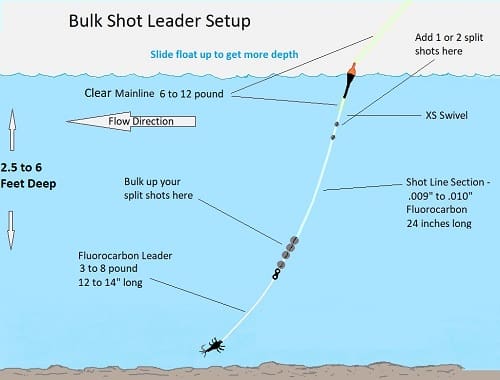
Regardless of whether I’m fishing in lakes or rivers, I use the same setup. The only difference is that in a lake, I use a slip float if the depth exceeds the length of my rod, so anything over 7 feet.
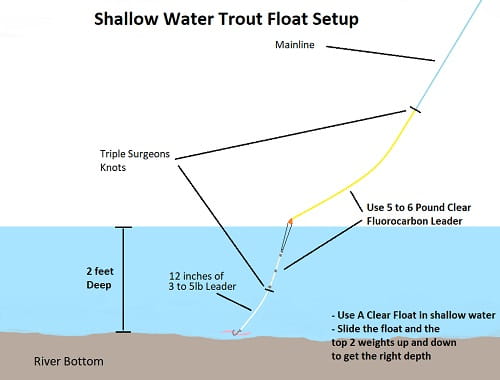
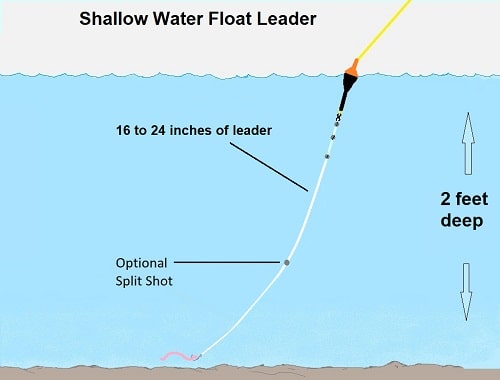
For rivers, I prefer longer rods of 10 to 12 feet, so I will use a fixed float in any water under 12 feet deep.
Adjust the leader diameter for the size of the trout or based on the conditions. I will upsize my leader in faster water or murkier water.
Drift Fishing Rigs
These are two rigs I use for drift fishing. The diagrams were made for steelhead but I use the exact same rig for trout, except that I downsize the line to a mainline of 6 to 8-pounds, and a leader of 2 to 4- pounds.
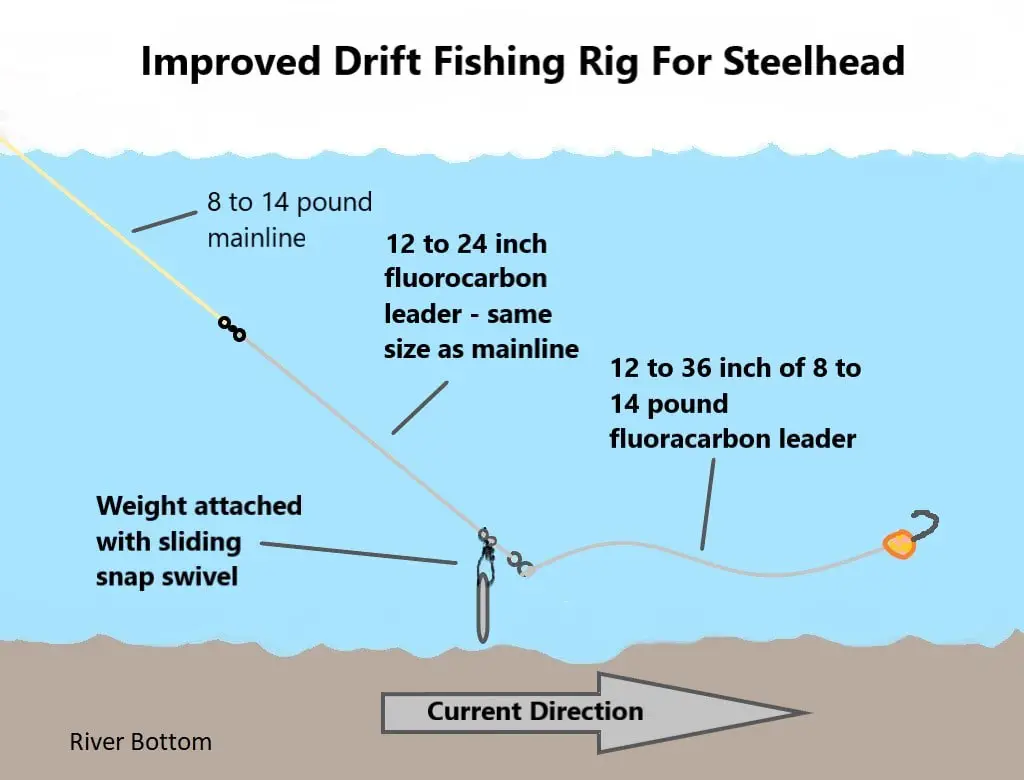
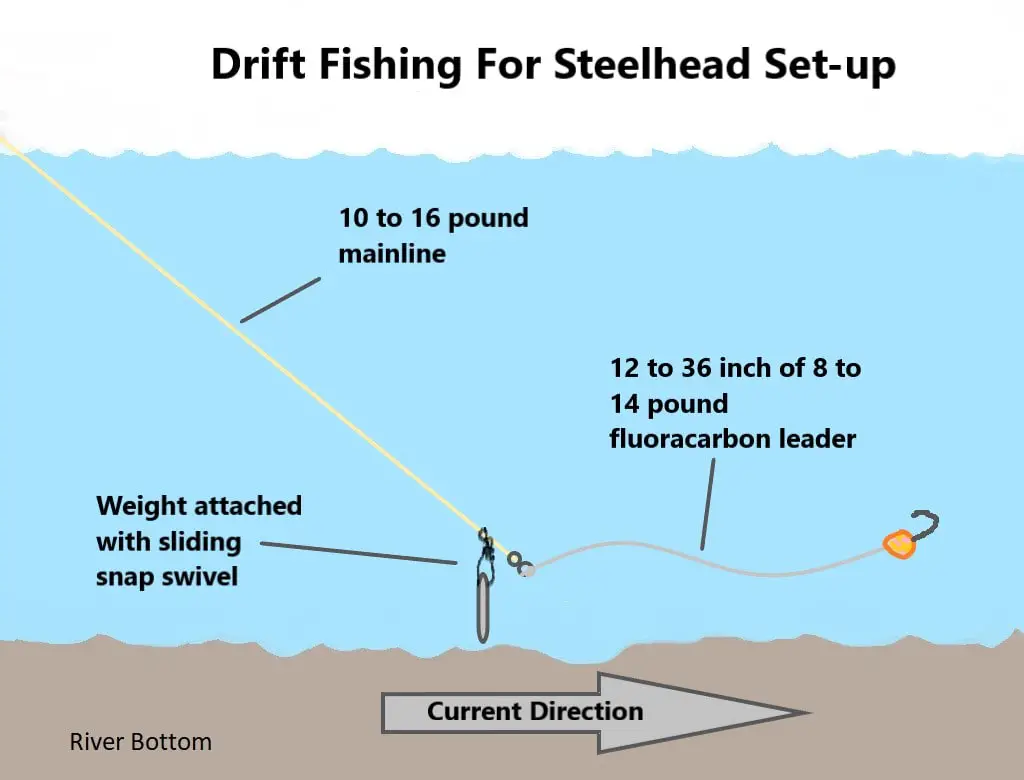
When I’m fishing in large rivers with strong currents or deeper water, I use the drift fishing method. This method has proven effective for trout, steelhead, salmon, carp, bass, and catfish.
Adjust the leader diameter for the size of the trout or based on the conditions. I will upsize my leader in faster water or murkier water.
Bottom Bouncing Trout Fishing Rig
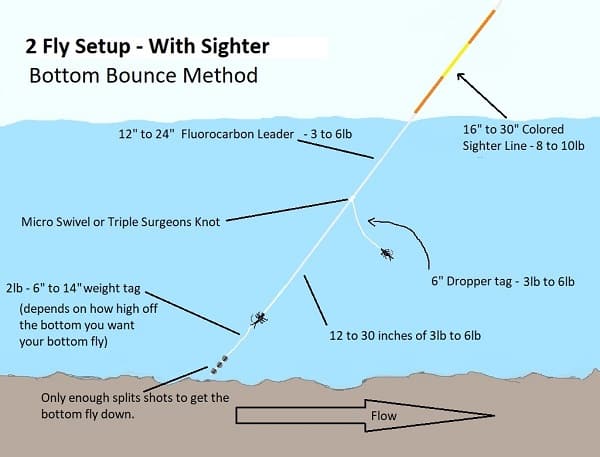
This method is akin to the drift fishing method, except I use it in smaller and shallower sections of rivers. It’s particularly effective in shallow riffles, runs, small pools, and pocket water.
Adjust the leader diameter for the size of the trout or based on the conditions. I will upsize my leader in faster water or murkier water.
Still-Water Trout Fishing Rig: Plunking For Trout
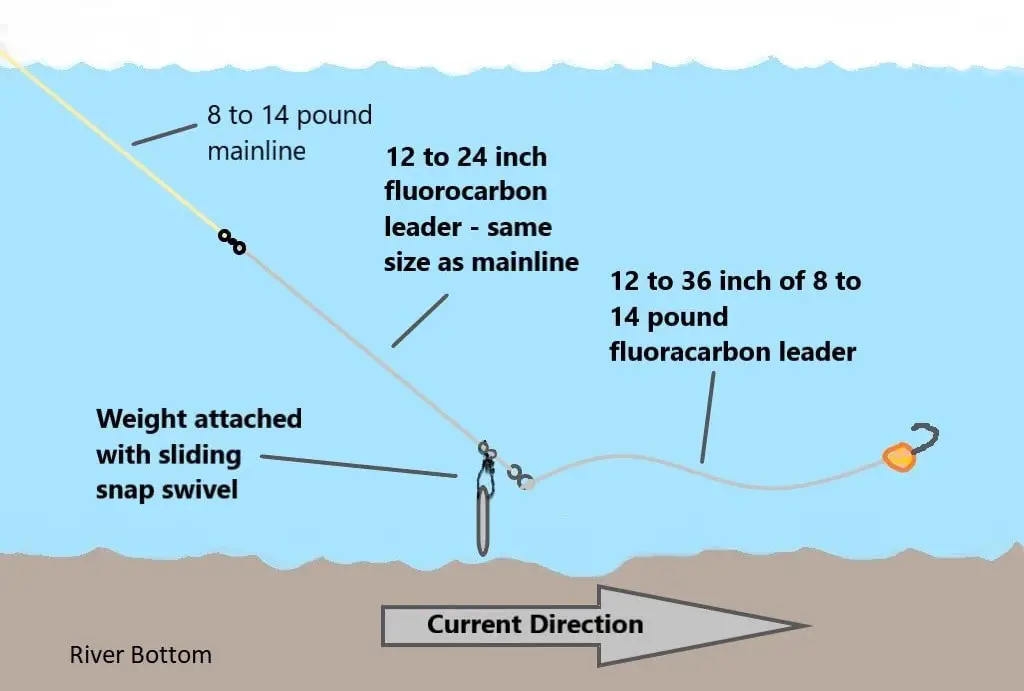
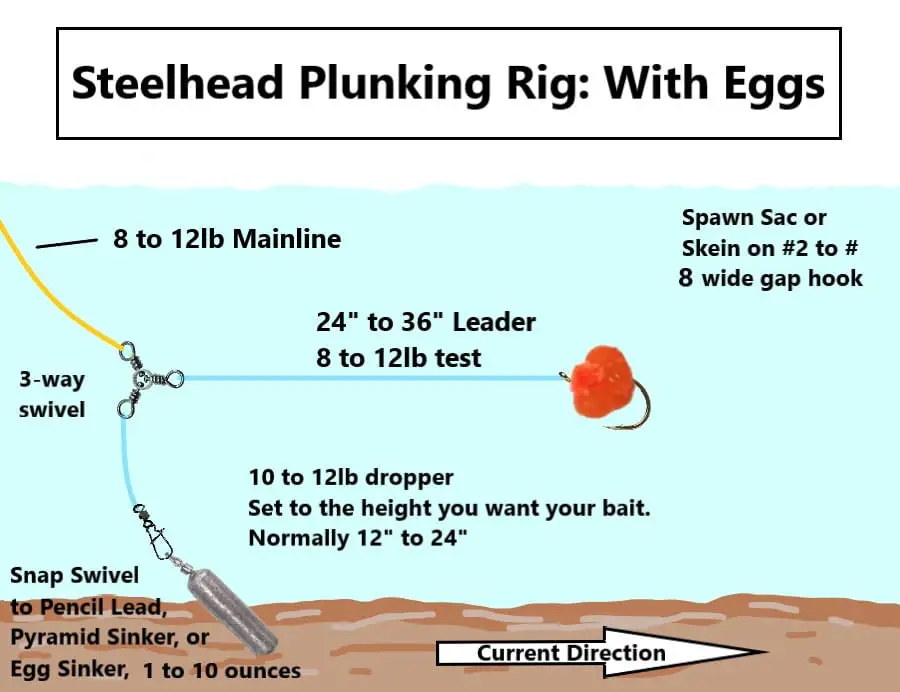
I use the bottom rig method in still waters such as lakes, ponds, and reservoirs for trout, salmon, steelhead, bass, carp, and catfish. I will use the Plunking rig in rivers mostly, however, it can also be used in still water.
Both setups are suitable for both trout fishing at night and daytime trout fishing. Since trout are often active at night, still fishing can be a sound strategy.
Adjust the leader diameter for the size of the trout or based on the conditions. I will upsize my leader in faster water or murkier water.
Bobber Doggin Trout Fishing Rig
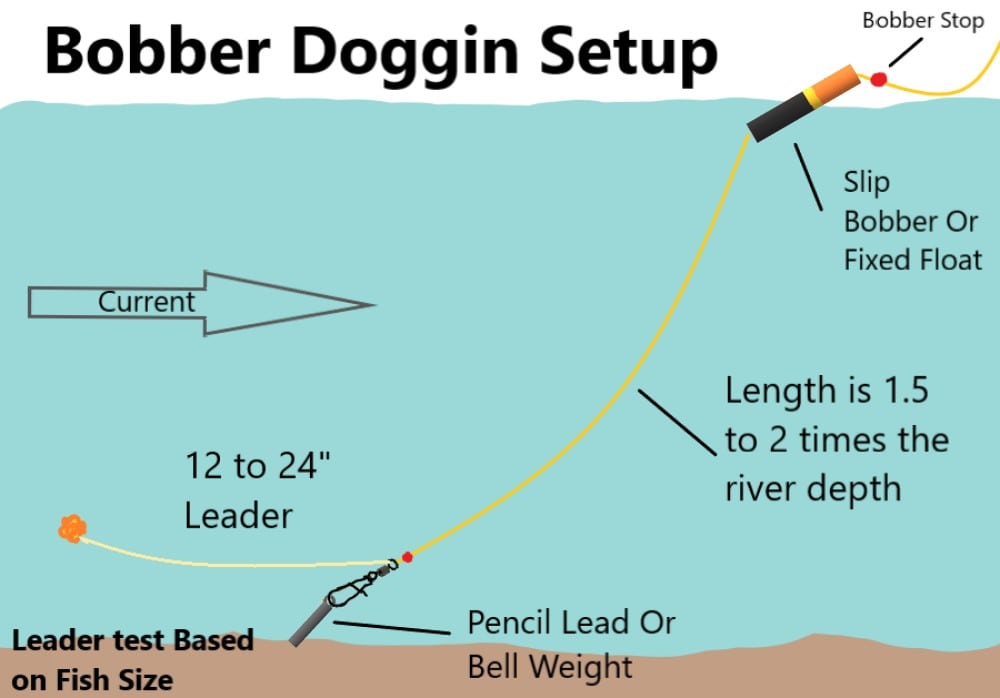
Bobber Doggin is a relatively new bobber fishing method for fishing rivers that is slowly gaining popularity. This method can be used for any bait-eating fish found in currents.
Adjust the leader diameter for the size of the trout or based on the conditions. I will upsize my leader in faster water or murkier water.
Chuck N Duck Fly Fishing Rig
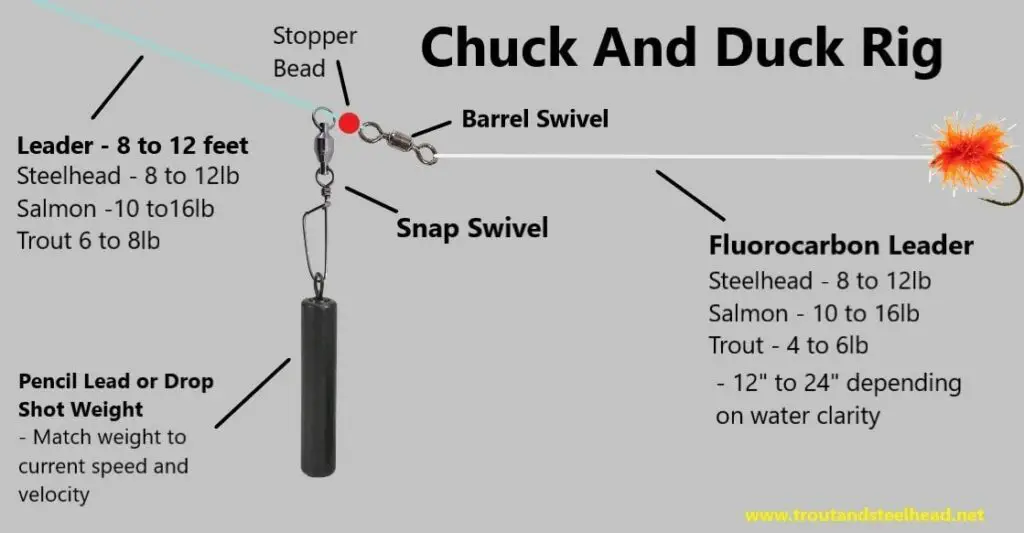
The Chuck n Duck fishing method is primarily used around the Great Lakes region, primarily on the USA side for trout and steelhead in larger faster rivers that get deep quickly.
The traditional Chuck n Duck rig uses a weight called a “Slinky”, or Pencil Lead, Drop Shot weights, or spit shots on a dropper tag.
See these rigs and learn this method at Chuck And Duck Fishing: A Complete Guide.
Tight lines,
Graham

I live in arizona. i see a lot of guys using treble hooks and they cover the hooks with the dough bait, i guess they do that so the fish wont see the hooks. is this method something you would recommend? i see you use just one hook
thank you
I much prefer the single hook and I leave the hook exposed.. The hooking percentage goes up, especially in current water.